Classification of Marine Organisms (3/3)
Underlying Mechanisms
No discussion of classification would be complete without some discussion of the underlying theories of how species arise, and what makes them related. These fall into two camps: evolution, and creation. In the interest of fairness, both are presented here, along with a few other ideas. No endorsement of any particular view should be assumed in this listing.
Evolution

Evolution is the concept that embodies the belief that existing animals and plants developed by a process of gradual, continuous change from previously existing forms. This theory, also known as descent with modification, constitutes organic evolution. Inorganic evolution, on the other hand, is concerned with the development of the physical universe from unorganized matter. Organic evolution, as opposed to belief in the special creation of each individual species as an immutable form, conceives of life as having had its beginnings in a simple primordial protoplasmic mass ( probably originating in the sea ) from which, through the long eras of time, arose all subsequent living forms.
Early theories
Evolutionary concepts appeared in some early Greek writings, e.g., in the works of Thales, Empedocles, Anaximander, and Aristotle. Under the restraining influence of the Church, no evolutionary theories developed during some 15 centuries of the Christian era to challenge the belief in special creation and the literal interpretation of the first part of Genesis; however, much data was accumulated that was to be utilized by later theorists. With the growth of scientific observation and experimentation, there began to appear from about the middle of the 16th century glimpses of the theory of evolution that emerged in the mid 19th century. The invention of the microscope, making possible the study of reproductive cells and the growth of the science of embryology, was a factor in overthrowing hampering theories founded in false ideas of the reproductive process; studies in classification ( taxonomy or systematics ) and anatomy, based on dissection, were also influential.
Linnaeus, in his later years, showed an inclination toward belief in the mutability of species as a result of his observations of the many variations among species. Buffon, on the basis of his work in comparative anatomy, suggested the influence of use and disuse in molding the organs of vertebrate animals. Lamarck was the first to present a clearly stated evolutionary theory, but because it included the inheritance of acquired characteristics as the operative force of evolution, his whole theory was ridiculed and discredited for many years.
Darwinism

Although special creation of each species was the prevalent belief even among scientists in the first half of the 19th century, the evidence in favor of evolution had by that time been uncovered. It remained for someone to assemble and interpret the evidence and to formulate a scientifically credible theory. This was accomplished simultaneously by A. R. Wallace and Charles Robert Darwin, who set forth the concepts that came to be known as Darwinism. In 1859 appeared the first edition of Darwin's Origin of Species. The influence of this evolutionary theory upon scientific thought and experimentation cannot be overestimated. In the years following the promulgation of Darwin's theory of evolution, many accepted and many denied its validity.
The theory found an opposing force in some religious creeds that declared it incompatible with their basic tenets. For a time evolution, sometimes falsely interpreted as meaning human descent from monkeys rather than descent from an ancient and extinct ancestor, became a target for attack by both church and educational authorities. Feeling ran high even as late as the time of the Scopes trial. Nevertheless, the theory of evolution became firmly entrenched as a scientific principle, and in most creeds, it has been reconciled with religious teachings. Some Christian fundamentalists, however, do not accept the theory and have striven to have biblical creationism taught in the schools as an alternative theory.
Modern Evolutionary theory

Evolutionary theory has undergone modification in the light of later scientific developments. As more and more information has accumulated, the facts from a number of fields of investigation have provided corroboration and mutual support. Evidence that evolution has occurred still rests substantially on the same grounds that Darwin emphasized; comparative anatomy, embryology, geographical distribution, and paleontology. But additional recent evidence has come from biochemistry and molecular biology, which reveals fundamental similarities and relations in metabolism and hereditary mechanisms among disparate types of organisms. In general, both at the visible level and at the biochemical, one can detect the kinds of gradations of relatedness among organisms expected from evolution.
The chief weakness of Darwinian evolution lay in gaps in its explanations of the mechanism of evolution and of the origin of species. The Darwinian concept of natural selection is that inheritable variations among the individuals of given types of organisms continually arise in nature and that some variations prove advantageous under prevailing conditions in that they enable the organism to leave relatively more surviving offspring. But how these variations initially arise or are transmitted to offspring, and hence to subsequent generations, was not understood by Darwin. The science of genetics, originating at the beginning of the 20th
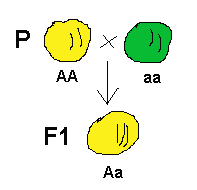
century with the recognition of the importance of the earlier work of Mendel, provided a satisfactory explanation for the origin and transmission of variation. In 1901, DeVries presented his theory that mutation, or suddenly appearing and well-defined inheritable variation ( as opposed to the slight, cumulative changes stressed by Darwin ), is a force in the origin and evolution of species. Mutation in genes is now accepted by most biologists as a fundamental concept in evolutionary theory. The gene is the carrier of heredity and determines the attributes of the individual; thus changes in the genes can be transmitted to the offspring and produce new or altered attributes in the new individual.
Still-prevalent misunderstandings of evolution are the beliefs that an animal or plant changes in order to better adapt to its environment - for example, that it develops an eye for the purpose of seeing - and that actual physical competition among individuals is required. Since mutation is a random process, changes can be either useful, unfavorable, or neutral to the individual's or species' survival. However, a new characteristic that is not detrimental may sometimes better enable the organism to survive or leave offspring in its environment, especially if that environment is changing, or to penetrate a new environment - such as the development of a lung-like structure that enables an aquatic animal to survive on land, where there may be more food and fewer predators.

Creationism
Creationism or creation science is the belief in the biblical account of the creation of the world as described in Genesis, a characteristic especially of fundamentalist Protestantism. Advocates of creationism have campaigned to have it taught in U.S. public schools along with the theory of evolution, which they dispute. In 1981, a federal judge ruled unconstitutional an Arkansas law requiring the teaching of creationism, holding it to be religious in nature; a similar Louisiana law was overturned in 1982. In 1999, supporters of creationism in Kansas succeeded in removing the requirement that evolution be taught as part of the state's high school biology curriculum, but after several supporters of the measure were not reelected to the state school board that decision was reversed in 2001. Fundamentalist Christians have also opposed the teaching of scientific theories concerning the formation of the universe.

fresco detail from the Sistine Chapel ceiling
Genesis 1:
In the beginning God created the heaven and the earth. And the earth was without form, and void; and darkness was upon the face of the deep. And the Spirit of God moved upon the face of the waters. And God said, Let there be light: and there was light. And God saw the light, that it was good: and God divided the light from the darkness. And God called the light Day, and the darkness he called Night. And the evening and the morning were the first day.
And God said, Let there be a firmament in the midst of the waters, and let it divide the waters from the waters. And God made the firmament, and divided the waters which were under the firmament from the waters which were above the firmament: and it was so. And God called the firmament Heaven. And the evening and the morning were the second day.
And God said, Let the waters under the heaven be gathered together unto one place, and let the dry land appear: and it was so. And God called the dry land Earth; and the gathering together of the waters called he Seas: and God saw that it was good. And God said, Let the earth bring forth grass, the herb yielding seed, and the fruit tree yielding fruit after his kind, whose seed is in itself, upon the earth: and it was so. And the earth brought forth grass, and herb yielding seed after his kind, and the tree yielding fruit, whose seed was in itself, after his kind: and God saw that it was good. And the evening and the morning were the third day.
And God said, Let there be lights in the firmament of the heaven to divide the day from the night; and let them be for signs, and for seasons, and for days, and years: And let them be for lights in the firmament of the heaven to give light upon the earth: and it was so. And God made two great lights; the greater light to rule the day, and the lesser light to rule the night: he made the stars also. And God set them in the firmament of the heaven to give light upon the earth, And to rule over the day and over the night, and to divide the light from the darkness: and God saw that it was good. And the evening and the morning were the fourth day.
And God said, Let the waters bring forth abundantly the moving creature that hath life, and fowl that may fly above the earth in the open firmament of heaven. And God created great whales, and every living creature that moveth, which the waters brought forth abundantly, after their kind, and every winged fowl after his kind: and God saw that it was good. And God blessed them, saying, Be fruitful, and multiply, and fill the waters in the seas, and let fowl multiply in the earth. And the evening and the morning were the fifth day.
And God said, Let the earth bring forth the living creature after his kind, cattle, and creeping thing, and beast of the earth after his kind: and it was so. And God made the beast of the earth after his kind, and cattle after their kind, and every thing that creepeth upon the earth after his kind: and God saw that it was good. And God said, Let us make man in our image, after our likeness: and let them have dominion over the fish of the sea, and over the fowl of the air, and over the cattle, and over all the earth, and over every creeping thing that creepeth upon the earth. So God created man in his own image, in the image of God created he him; male and female created he them.
And God blessed them, and God said unto them, Be fruitful, and multiply, and replenish the earth, and subdue it: and have dominion over the fish of the sea, and over the fowl of the air, and over every living thing that moveth upon the earth. And God said, Behold, I have given you every herb bearing seed, which is upon the face of all the earth, and every tree, in the which is the fruit of a tree yielding seed; to you it shall be for meat. And to every beast of the earth, and to every fowl of the air, and to every thing that creepeth upon the earth, wherein there is life, I have given every green herb for meat: and it was so.
And God saw every thing that he had made, and, behold, it was very good. And the evening and the morning were the sixth day.
-- from the Bible
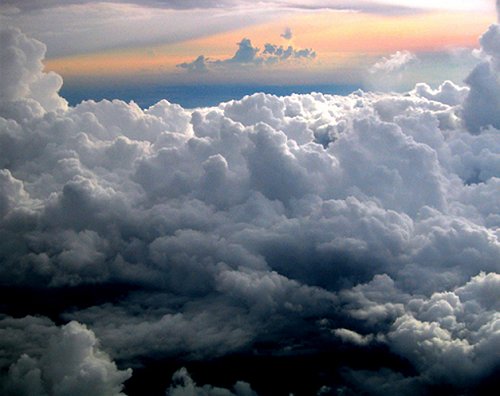
Nearly all denominations of Christianity assert that God is the origin, the first cause. The Roman Catholic Church holds as an unchangeable tenet of Christian faith, that "In the beginning God created the heavens and the earth". Here, creation is described as an absolute beginning, which includes the assertion that the very existence of the universe is contingent upon a necessary higher being, a God who is not himself created. Therefore the doctrine of biblical creation places the knowledge of God central in the pursuit of the knowledge of anything, for everything comes from God. Nevertheless, this view does not mandate the concept of special creation; it says nothing about the mechanism by which anything was created.
Judaism has a continuum of views about creation, the origin of life, and the role of evolution in the formation of species. The major Jewish denominations, including many Orthodox Jewish groups, accept evolutionary creationism or theistic evolution. The contemporary general approach of Judaism, excepting Orthodox traditions, is to not take the Torah as a literal text, but rather as a symbolic or open-ended work. As far as Orthodox Jews, who seek to reconcile discrepancies between science and the Bible, go, the notion that science and the Bible should even be reconciled through traditional scientific means is questioned. To these groups, science is as true as the Torah and if there seems to be a problem, our own epistemological limits are to blame for any apparent irreconcilable point.
Although phrased differently, this doctrine of creation is common in many branches of other religions. The strictness to which adherents are required to accept these views, and the sense in which these definitions are official, vary widely.
The Hindu religion has an especially interesting creation story:
This is not the first world, nor is it the first universe. There have been and will be many more worlds and universes than there are drops of water in the holy river Ganges. The universes are made by Lord Brahma the Creator, maintained by Lord Vishnu the Preserver, and destroyed by Lord Shiva. Since the universes must be destroyed before they can be recreated, Lord Shiva is called the Destroyer and Re-creator. These three gods are all forms of Supreme One and part of the Supreme One. The Supreme One is behind and beyond all.
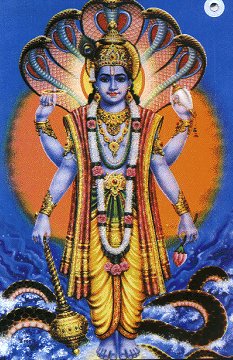
After each old universe is destroyed nothing is left but a vast ocean. Floating on this ocean, resting on the great snake Ananta, is Lord Vishnu. Some say that a lotus flower springs from his navel and from this comes Lord Brahma. And it is from Lord Brahma that all creation comes.
How does Lord Brahma create? Some tell of how he grows lonely and splits himself in two to create male and female. Then he becomes one again and human beings are created. In the same way, he creates all the other living things, from the great animals to the tiniest insects.
Others say that everything comes from different parts of Lord Brahma's body. All the different animals and all the people come from his mouth, arms, thighs, and feet. Everything comes from one - Lord Brahma, who is part of the Supreme One - so everything is part of the Supreme One. For this universe, this world, and this Lord Brahma, like all those before and all those to come, will be destroyed by Lord Shiva.
How long is the life of a universe? Its length is beyond imagination. One day to Lord Brahma is longer than four thousand million of the years that we know. Every night when Lord Brahma sleeps the world is destroyed. Every morning when he awakes it is created again. When the Lord Brahma of this universe has lived a lifetime of such days the universe is completely destroyed by Lord Shiva. Then everything disappears into the Supreme One. For an unimaginable period of time chaos and water alone exist. Then once again Lord Vishnu appears, floating on the vast ocean. From Lord Vishnu comes forth Lord Brahma of the new universe and the cycle continues forever.
[ So we are all parts of God -- editor ]
Other Ideas
Intelligent Design is the concept that "certain features of the universe and of living things are best explained by an intelligent cause, not an undirected process such as natural selection." Its leading proponents, all of whom are affiliated with the Discovery Institute, say that intelligent design is a scientific theory that stands on equal footing with, or is superior to, current scientific theories regarding the origin of life.
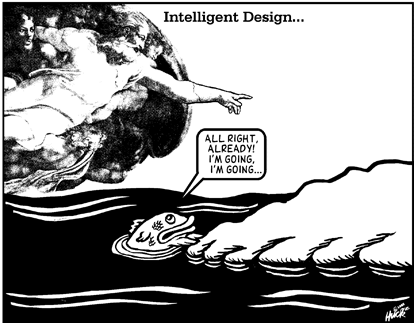
Intelligent Design is little more than an attempt to recast the religious belief of divine creation as a scientific theory that should be taught in school science classes on the same footing as evolution. By making no specific mention of God, Intelligent Design also seeks to sidestep objections to the teaching of religion in public schools.
An overwhelming majority of the scientific community views intelligent design not as a valid scientific theory but as pseudo-science or junk science. The U.S. National Academy of Sciences has stated that intelligent design "and other claims of supernatural intervention in the origin of life" are not science because they cannot be tested by experiment, do not generate any predictions and propose no new hypotheses of their own.

with the Monster, a tree-covered mountain,
and a "midgit."
Flying Spaghetti Monsterism is the belief in a supernatural Creator entity that resembles spaghetti and meatballs, called the Flying Spaghetti Monster. The followers of the Flying Spaghetti Monster (FSM) call themselves Pastafarians, and expect that FSM be taught alongside evolution and Intelligent Design. These are the canonical beliefs set forth by FSM:
- An invisible and undetectable Flying Spaghetti Monster created the universe, starting with a mountain, trees and a "midgit".
- All evidence pointing towards evolution was intentionally planted by the Flying Spaghetti Monster. The FSM tests Pastafarians' faith by making things look older than they really are.
For example, a scientist may perform a carbon-dating process on an artifact. He finds that approximately 75% of the Carbon-14 has decayed by electron emission to Nitrogen-14, and infers that this artifact is approximately 10,000 years old, as the half-life of Carbon-14 appears to be 5,730 years. But what our scientist does not realize is that every time he makes a measurement, the Flying Spaghetti Monster is there changing the results with His Noodly Appendage. We have numerous texts that describe in detail how this can be possible and the reasons why He does this. He is of course invisible and can pass through normal matter with ease. - Pastafarian heaven includes, at least, one beer volcano. "RAmen" is the official conclusion to prayers, certain sections of the Gospel of the Flying Spaghetti Monster, etc.
- Pirates are a major component of Flying Spaghetti Monsterism dogma, and were the original Pastafarians.

Global warming, earthquakes, hurricanes, and other natural disasters are a direct consequence of the decline in numbers of pirates since the 19th Century.
Flying Spaghetti Monsterism was devised as a tongue-in-cheek answer to Intelligent Design. FSM is actually a parody of a real philosophy known as Omphalos:
The Omphalos hypothesis was named after the title of an 1857 book, Creation (Omphalos) by Philip Henry Gosse, in which Gosse argued that in order for the world to be "functional", God must have created the Earth with mountains and canyons, trees with growth rings, Adam and Eve with hair, fingernails, and navels (omphalos is Greek for "navel") and that therefore no evidence that we can see of the presumed age of the earth and universe can be taken as reliable. The idea has seen a revival in the twentieth century by some modern creationists, who have extended the argument to light that appears to originate in far-off stars and galaxies, although many other creationists reject this explanation (and also believe that Adam and Eve had no navels).
This view is not popular with either the scientific or religious communities: It is unverifiable and unrefutable through any conceivable scientific method, and in fact, has serious negative implications for science as a whole. From the religious perspective, it can be interpreted as God having 'created a fake', which does not sit well with most benevolent theologies. So, ironically, this seeming reconciliation between science and faith is rejected by both sides.
The Omphalos hypothesis contains a powerful philosophic problem, one that troubles even those who have applied it in recent times. Since the hypothesis is based on the idea that apparent age is an illusion, it is perfectly reasonable to suggest that the world was created mere minutes ago. Any memories you have of times before this were created in situ, in exactly the same fashion that the fossils were.
In fact, you could go so far as to deny the very existence of time - nothing exists but the present moment, and we simply imagine the rest. The next step is to deny reality itself - are we all just computer programs running in a big simulation? Now we are verging on science fiction.
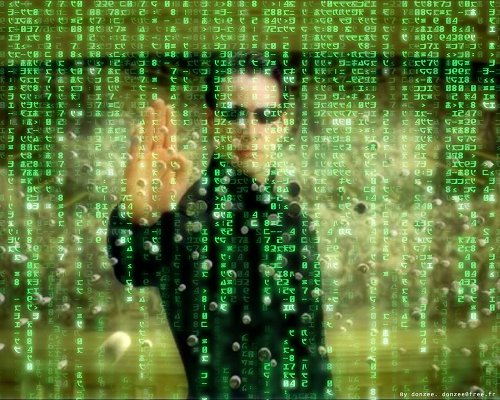
The religious and philosophical overtones are what made "The Matrix" such a huge success.
Last Thursdayism is the idea that the universe was created last Thursday, but with the appearance of age: people's memories, history books, fossils, light already on the way from distant stars, and so forth. Oh, and it will end next Thursday. That explains a lot about Thursdays, if nothing else.
Frisbeetarianism: The belief that when you die your soul goes up on the roof and gets stuck.
What do you want to believe? Take your pick, or make up your own.
Compiled from various sources

